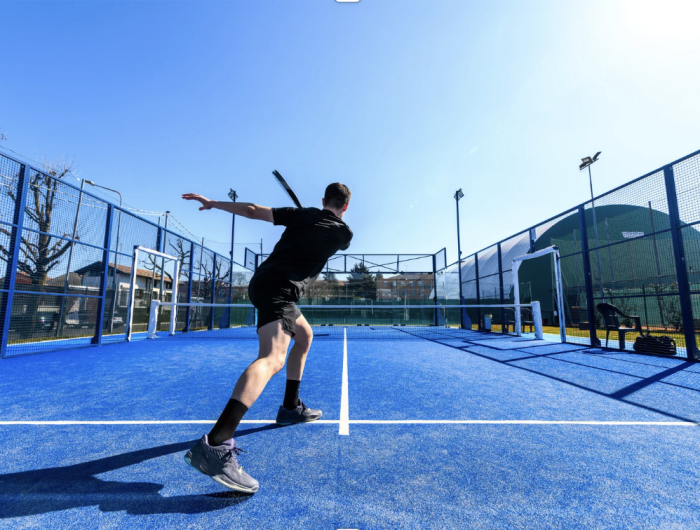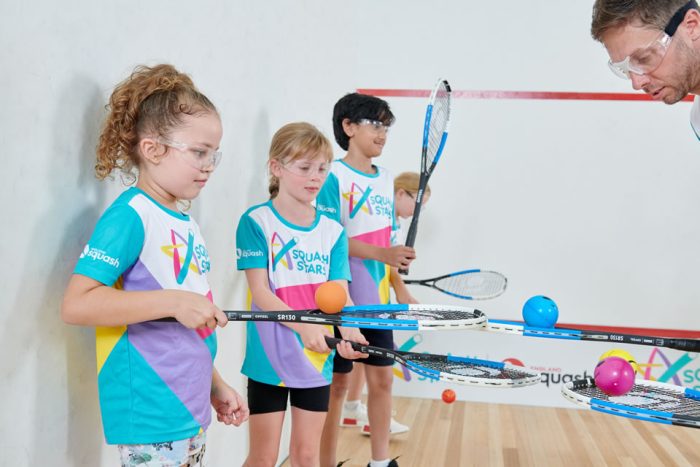I came into 2024 full of optimism for the future squash, fresh off the back of one of the most pivotal years the sport has experienced in many years! October 16th, 2023 was a momentous day for everyone involved in the game, and perhaps one of the greatest in our history, where it was finally announced that squash would become an Olympic sport.
In addition to that, earlier in 2023, the PSA announced the investment from Mark Walter, a long-time supporter of squash, and owner of Chelsea and the LA Dodgers, among other sporting entities.
Both announcements are a welcome boost for our sport, particularly after the COVID pandemic which had an adverse effect on squash compared to other racket sports that were able to benefit from competing across a net in a socially distanced manner.
My club in Abergavenny was hit particularly hard. Pre-COVID, we had five teams playing in the Welsh leagues; at one point post-COVID, we were down to one, and now we have settled on two.
It felt like the enforced COVID break meant that a large number of squash players chose to retire their rackets simultaneously. The change in routine and habit led people to question whether spending a whole evening out midweek was how they wanted to spend their time.
We are not alone in this; participation in amateur competitive sport has been squeezed across the board. Even sports such as football have felt the effects, with it becoming increasingly difficult to raise 11-aside teams at the weekend.
 I’m convinced a large part of this is down to the fact that it’s never been easier to be entertained. New activities compete for our attention and the draw of the gym is greater than it has ever been with increased focus on group training and a social element. Our phones offer non-stop dopamine hits; we have unlimited access to TV and film. We’re no longer at the mercy of what’s on terrestrial TV. We can socialise from home via social media if we like. The draw of being in a club is somewhat diminished compared to years gone by.
I’m convinced a large part of this is down to the fact that it’s never been easier to be entertained. New activities compete for our attention and the draw of the gym is greater than it has ever been with increased focus on group training and a social element. Our phones offer non-stop dopamine hits; we have unlimited access to TV and film. We’re no longer at the mercy of what’s on terrestrial TV. We can socialise from home via social media if we like. The draw of being in a club is somewhat diminished compared to years gone by.
That being said, the rise of padel and pickleball has been nothing short of remarkable, with the former currently being labelled ‘the fastest-growing sport in the world’. Significant investment is flowing into the sport, with new courts and clubs being constructed rapidly. This growth is reminiscent of the expansion squash experienced during the 80s.

Padel very much seems to be the ‘trendy’ sport to be seen playing; it’s enjoyable, relatively easy, and inherently social. Its one shortfall is that it may not significantly elevate your heart rate, as the rallies are often quite short, and you’re only covering half of the court. This is where squash excels; it offers a rigorous workout, with no opportunity for respite. It’s challenging and relentless. You must engage in every rally, in every point; you have, on average, 7 seconds between rallies, and single games typically last anywhere from 9-20 minutes. This is perhaps our sport’s most significant attribute; it’s a game for athletes who relish the challenge, who enjoy the sensation of exertion, a pounding chest, shortness of breath, and the endorphin release that follows a thorough workout.
The news of Olympic inclusion is not a panacea for our sport. It’s undoubtedly positive news that will enhance our global visibility come 2028. However, it will not instantaneously increase participation numbers; it’s not going to lead to a surge of new players entering our courts, or automatically resonate with a younger audience. New funding opportunities will arise in some regions, but these will likely be aimed primarily at elite athletes.
Attention must now turn to the grassroots level. The onus is on the national federations, many of which face chronic underfunding. A shift is occurring in several major nations towards new affiliation structures that implement direct-to-player models, replacing the traditional club-based affiliations. This change is prudent, considering updated data protection laws and the necessity for players to be clear about their affiliations.
In my involvement in these discussions, I’ve noticed considerable resistance from players who are sceptical about the value offered by governing bodies. It’s a classic dilemma: tight budgets mean limited membership benefits.
With the recent hikes in the cost of living, questioning value for money is completely justifiable. However, it’s worth noting that other sports, such as triathlon or cycling, require race licences for participation in events, at all points along the competitive spectrum, where membership of a national governing body is significantly higher than what is expected from a squash player.
 National federations need the support and backing of players to survive and flourish. They play a pivotal role in driving grassroots initiatives, such as qualifying more coaches, appointing development officers, creating school programmes, and organising amateur events. While there will always be pockets of growth where successful clubs can reinvest in development, or where enthusiastic volunteers introduce new players to the sport, a more holistic approach is required to return to the halcyon days of the 80s. Making the sport commercially viable is key. We need to see the construction of new squash courts, the establishment of new programmes, and the initiation of innovative projects. Much of this impetus must come from the governing bodies. Criticism of these organisations is common, but having worked closely with many, I understand their constraints: limited resources and budgets, and a commitment to doing the best they can with what they have.
National federations need the support and backing of players to survive and flourish. They play a pivotal role in driving grassroots initiatives, such as qualifying more coaches, appointing development officers, creating school programmes, and organising amateur events. While there will always be pockets of growth where successful clubs can reinvest in development, or where enthusiastic volunteers introduce new players to the sport, a more holistic approach is required to return to the halcyon days of the 80s. Making the sport commercially viable is key. We need to see the construction of new squash courts, the establishment of new programmes, and the initiation of innovative projects. Much of this impetus must come from the governing bodies. Criticism of these organisations is common, but having worked closely with many, I understand their constraints: limited resources and budgets, and a commitment to doing the best they can with what they have.
If we are to maximise the opportunity and excitement generated by Olympic inclusion, we need to demonstrate unity and support for the organisations striving to improve our sport. Constructive engagement, rather than criticism from the sidelines, is what the sport needs. It’s about energy, positivity, and active involvement at the grassroots level, in clubs, and through affiliation to governing bodies. This is the lifeblood of the sport.
I am a firm believer that we need to embrace the social side of the game, it’s never been easier to find people of a similar standard to play. SquashLevels makes this task very straightforward and we should embrace graded competitions, where the measure of success is how much fun has been had by the participants.
Squash clubs such as Daventry have embraced SquashLevels to bring groups of people together with the collective ambition of improving players’ levels. They run training sessions for different cohorts based on their current level and their aspirations. This creates a sense of community and camaraderie that in more recent years has been discovered in gyms offering CrossFit training.
We know we have the best game in the world; the PSA is doing a fantastic job of showcasing it. Now, we need to make the sport more attractive at the club level, and work out new and innovative ways to draw people onto the squash court, to share in the challenge we cherish within those four walls.
I’d love to hear your thoughts on where the opportunities are to drive the game forward, or indeed where you’ve seen projects succeed or fail, and what the challenges that squash faces in your local community. Click here to send in your comments.
Jethro Binns
SquashSkills Founder
Sign up to the SquashSkills newsletter
Get world class coaching tips, straight to your inbox!